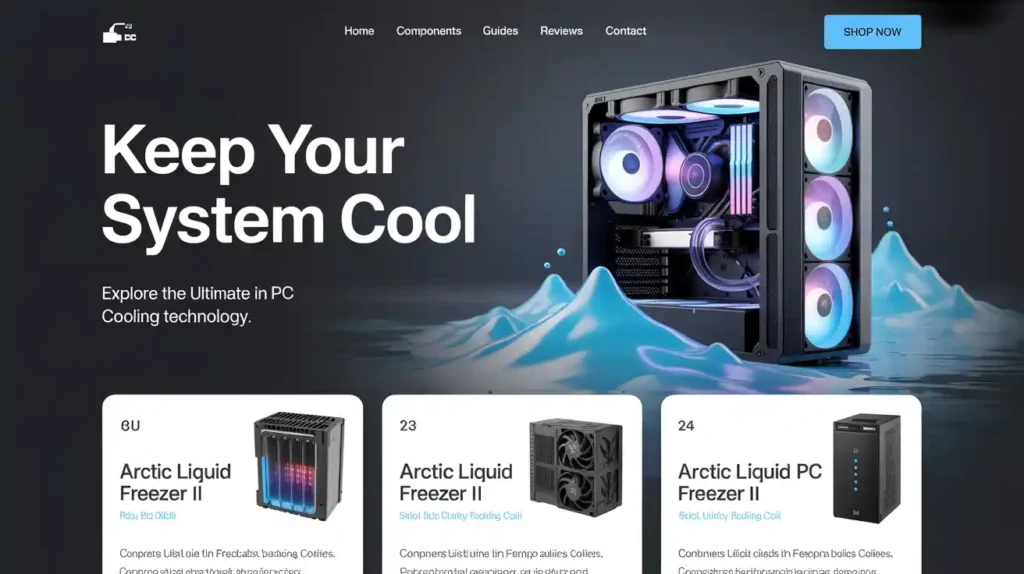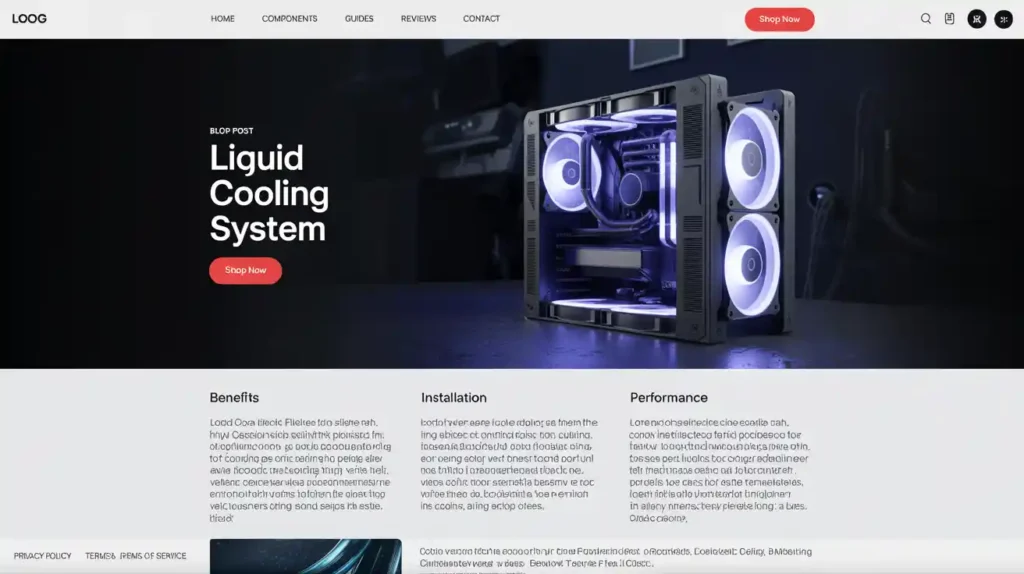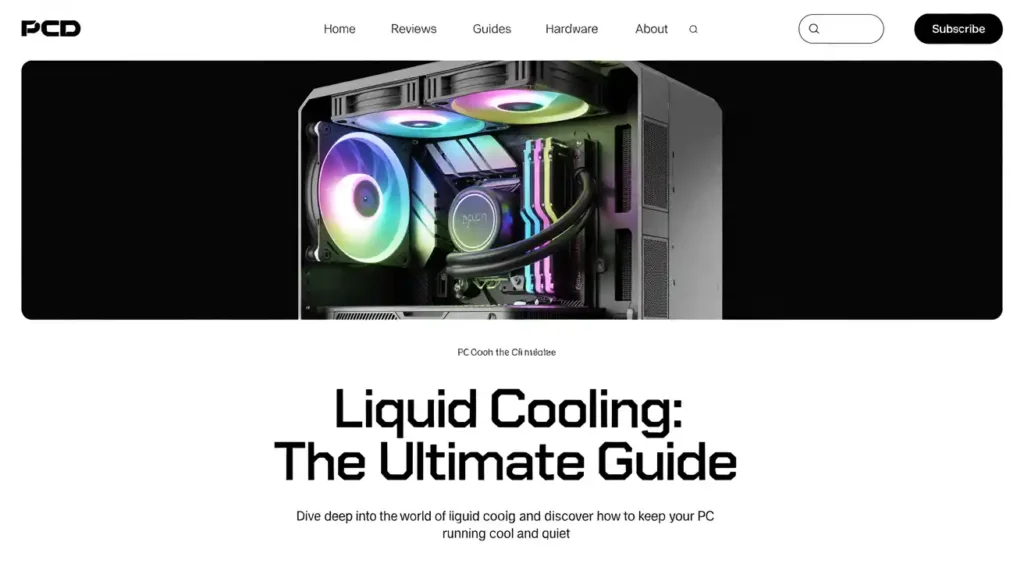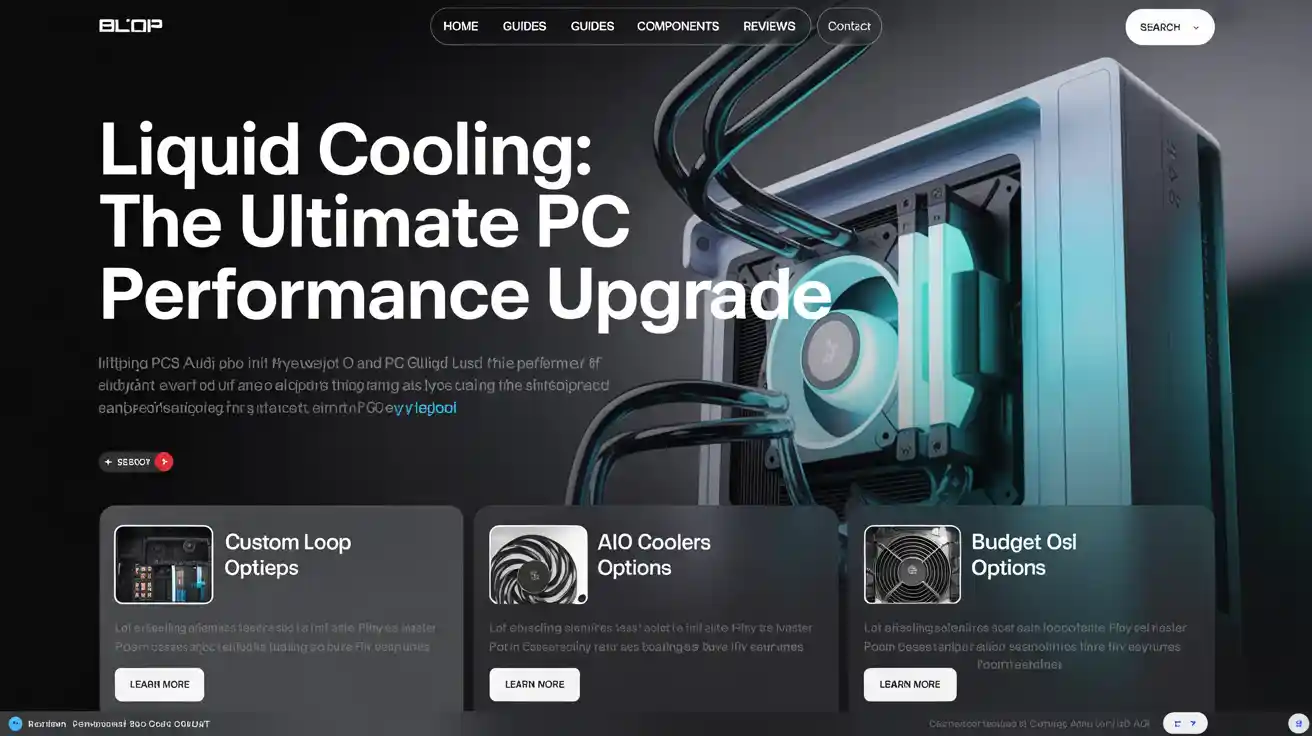As computers become faster, more powerful, and more compact, they also generate more heat. Whether you’re a gamer pushing your GPU to its limits, a content creator rendering 4K video, or a data scientist training AI models—keeping your PC cool is critical to performance and longevity.
Traditional air cooling, while reliable, is beginning to show its limitations in high-performance computing environments. Enter liquid cooling—a powerful, efficient, and increasingly popular alternative that promises quieter operation, better thermal performance, and sleek aesthetics.
In this blog post, we’ll dive into what liquid cooling is, how it works, the types of systems available, its benefits, drawbacks, and why it’s being hailed as the future of PC cooling.
ALSO CHECK: Web 3.0 and Blockchain: The Future of Online Business
What Is Liquid Cooling?
Liquid cooling, also known as water cooling, is a method of removing heat from computer components by using a liquid coolant instead of air. It typically involves circulating a coolant (usually a mixture of distilled water and additives) through a closed-loop system that includes water blocks, a pump, radiator, and fans.
This system transfers heat away from hot components like the CPU (central processing unit) and GPU (graphics processing unit) more efficiently than traditional air cooling.
How Does Liquid Cooling Work?
The principle behind liquid cooling is simple: liquid absorbs and transfers heat better than air. Here’s a breakdown of how a typical system works:
- Water Block: Mounted directly on the CPU or GPU, it contains channels through which coolant flows, absorbing heat from the component.
- Pump: Moves the heated coolant away from the component and toward the radiator.
- Radiator: As the coolant passes through, fans blow air over the radiator’s fins to dissipate heat.
- Coolant: Once cooled, the liquid circulates back to the water block, and the process repeats.
There are two main types of liquid cooling systems:
- Closed-Loop (AIO – All-in-One): Preassembled, sealed units that are easy to install and maintain. Popular for beginners and mid-level users.
- Open-Loop (Custom Cooling): Fully customizable systems with separate components. Ideal for enthusiasts, overclockers, or anyone building a high-end PC.

Why Liquid Cooling Is Becoming the Future of PCs
1. Superior Thermal Performance
Liquid is much better at transferring heat than air. This makes liquid cooling more effective at maintaining lower temperatures, especially under heavy loads. Lower temps result in:
- Better CPU and GPU performance
- More headroom for overclocking
- Greater system stability and longevity
As processors and graphics cards continue to increase in power and thermal output, air coolers struggle to keep up—making liquid cooling the smarter choice.
2. Quiet Operation
High-performance air coolers require large, fast-spinning fans that can be quite noisy. In contrast, liquid cooling systems can operate with lower RPM fans or fewer fans overall because the liquid does much of the heat transfer work.
This results in quieter PCs, especially during intense tasks like gaming or rendering.
3. Space Efficiency
Air coolers, especially those for high-end CPUs, can be bulky and take up significant internal space. This can restrict airflow or create compatibility issues with other components.
Liquid coolers, especially AIOs, free up space around the CPU socket and enable more flexible PC designs, including compact builds like mini-ITX cases.

4. Aesthetic Appeal
Liquid cooling isn’t just functional—it’s also visually stunning. Custom loops with colored coolant, transparent tubing, and RGB lighting turn your PC into a work of art.
Even AIO coolers now come with sleek designs, LCD screens, and customizable lighting that make them a centerpiece of any modern setup.
5. Future-Proofing
As CPUs and GPUs become more powerful (and hotter), thermal management becomes critical. Many upcoming processors, including those from Intel and AMD, are expected to have higher thermal design power (TDP) ratings.
Liquid cooling offers a scalable solution—ready to handle the increased heat loads of tomorrow’s hardware.
Use Cases: Who Needs Liquid Cooling?
While not every PC user requires liquid cooling, it offers significant advantages in certain scenarios:
- Gamers: AAA games push hardware hard—liquid cooling keeps things cool and quiet during long sessions.
- Overclockers: Pushing components beyond factory limits requires superior thermal control.
- Content Creators: Video editing, 3D modeling, and rendering demand consistent performance over long periods.
- Streamers: Running multiple processes (game, recording, broadcasting) can cause heat spikes.
- Silent PC Builders: Those wanting ultra-quiet systems will benefit from low-noise liquid setups.
Air Cooling vs. Liquid Cooling: Key Differences
| Feature | Air Cooling | Liquid Cooling |
|---|---|---|
| Cooling Efficiency | Good (for moderate loads) | Excellent (under heavy loads) |
| Noise Level | Moderate to Loud | Generally Quiet |
| Size | Bulky heatsinks | Compact around CPU |
| Aesthetics | Functional | Highly customizable |
| Cost | Budget-friendly | Higher upfront investment |
| Ease of Installation | Easy | AIOs are easy, customs are complex |
| Maintenance | Very low | AIO = low, Custom = moderate |
Drawbacks of Liquid Cooling
While liquid cooling offers many benefits, it’s not without its downsides:

⚠️ Higher Cost
Liquid cooling systems, especially custom loops, are significantly more expensive than air coolers. Even entry-level AIOs cost more than standard tower coolers.
⚠️ Installation Complexity
While AIOs are fairly easy to install, custom cooling loops require careful planning, assembly, and sometimes case modifications.
⚠️ Potential for Leaks
Though rare with modern components, coolant leaks are possible. A properly installed system with high-quality parts minimizes this risk, but it’s something to consider.
⚠️ Maintenance
Custom systems need periodic maintenance—like topping off coolant, cleaning tubes, and replacing fluid. AIOs are much easier but may still degrade over time.
Trends in Liquid Cooling Innovation
The liquid cooling market is growing fast, with major innovations enhancing reliability, performance, and aesthetics:
- LCD Screens on Pumps: Display CPU temps, logos, or even animations.
- Software Integration: Real-time control and monitoring via apps like Corsair iCUE or NZXT CAM.
- Modular Components: Easy-swappable parts in custom loops.
- Eco-Friendly Coolants: Non-toxic, biodegradable fluids with anti-corrosion features.
- Compact Radiators: Thinner, more efficient radiators for tighter builds.
Major brands like NZXT, Corsair, Cooler Master, EKWB, and Thermaltake are leading the way in consumer-friendly liquid cooling products.
Liquid Cooling in Laptops and Servers
While mostly associated with desktops, liquid cooling is now appearing in high-performance laptops and data centers.
- Gaming laptops like the ASUS ROG GX700 use external liquid cooling docks.
- Enterprise servers use liquid cooling to manage dense workloads and improve energy efficiency.
This expansion into mobile and enterprise computing highlights just how important thermal management is becoming across the board.
Conclusion: Why Liquid Cooling Is the Future
In a world where performance and efficiency matter more than ever, liquid cooling stands out as the next logical evolution in PC thermal management.
Its superior cooling capacity, silent operation, aesthetic versatility, and scalability make it ideal for gamers, creators, and professionals alike. As hardware continues to advance, and as PC designs get smaller and more demanding, air cooling is being pushed to its limits.
Whether you’re building a powerhouse gaming rig or a quiet workstation, liquid cooling offers the tools to keep your system running at its best—not just today, but into the future.


1 thought on “What Is Liquid Cooling and Why It’s the Future of PCs”